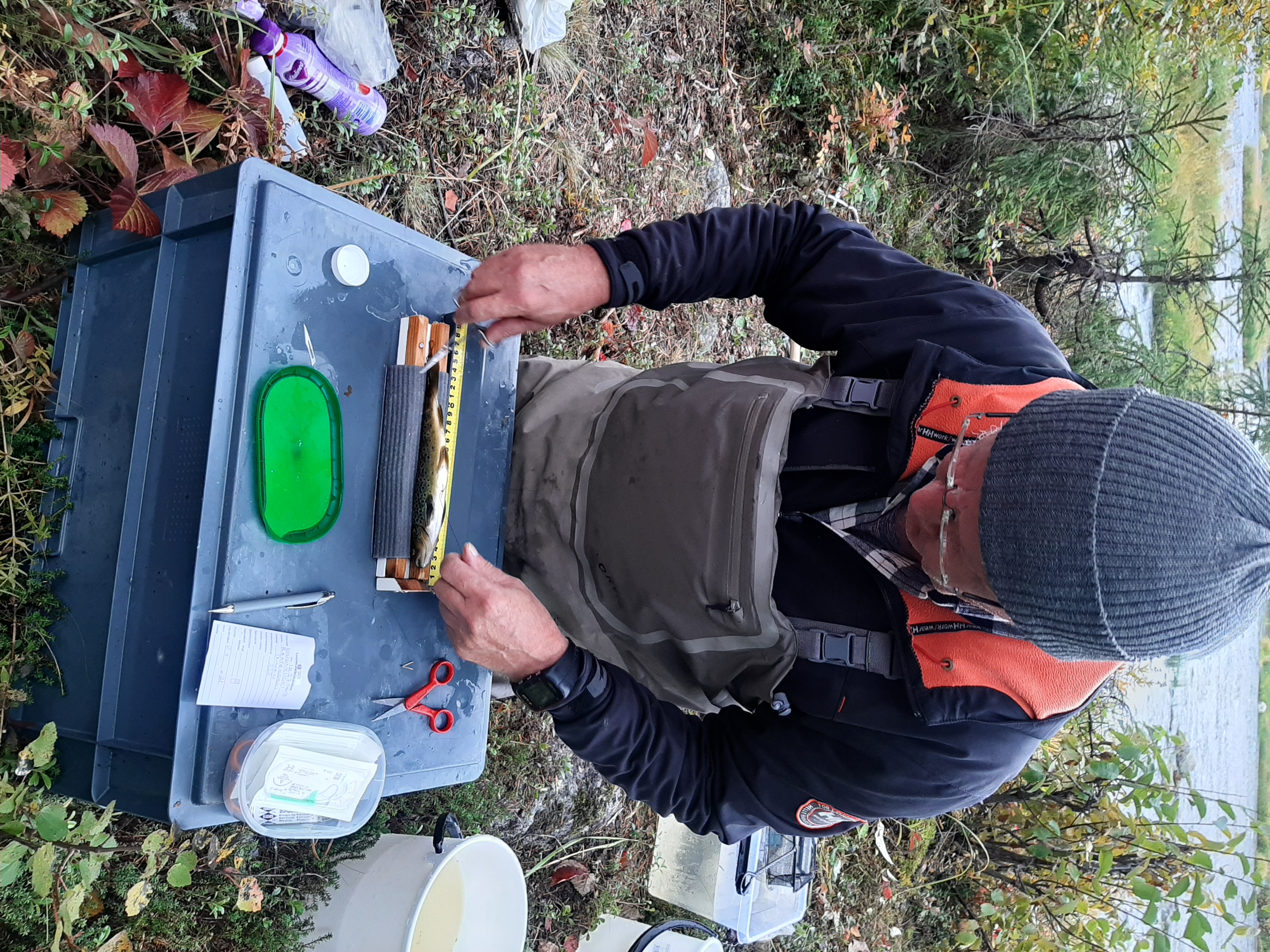Migration study of juvenile brown trout continues in crossborder River Kuusinki

In the beginning of September, 40 brown trout juveniles, sized about 20 cm, were captured by ichthyologists of Natural Resources Institute Finland (Luke) at Raatekoski Rapids in River Kuusinki, Finland. The fish were equipped with a tiny black capsule that sends acoustic radio signal under water.
In the above photo, senior scientist Ari Huusko is measuring an anaesthetized juvenile brown trout.
In the photo below, he is stitching up the surgical wound through which a radio transmitter was placed in the abdominal cavity of the fish.
Last year, 68 fish were similarly equipped with transmitters in Raatekoski Rapids in project Pro Trout. While capturing the new lot this autumn, scientists found out that quite a few of the last year's lot had not been in a hurry to migrate across the border to feed in Russian lakes Panozero and Pyaozero, but had stayed in their native river for another year, at least.
Three underwater acoustic radio signal receiver stations are in operation in Russian parts of the Oulanka-Pyaozero migration route of the brown trout and one in Finland, right by the border zone in River Kuusinki. The loggers will be landed right before freezing of the waters, so that the accrued migration data can be downloaded to a laptop for scrutiny.
The battery-life of an acoustic transmitter is some 600 days, enabling monitoring of the last-tagged 40 brown trout until summer 2023. Project Pro Trout ends in September 2023.
A Karelia ENI -funded study in 2014 found that 97 % of the brown trout of the Oulanka-Pyaozero water system that have chosen the adfluvial migratory life style (have smoltified), have done so by the age of four years. Average length of a 4-y old fish at smoltification was found to be 24 cm, and that of a 3-y old one 21 cm. In addition to smolt migration mortality and timing, the current study will also shed light on how common it is for the brown trout of River Kuusinki to forego lake migration altogether and opt for a local, riverine life style and small body size at sexual maturity.





